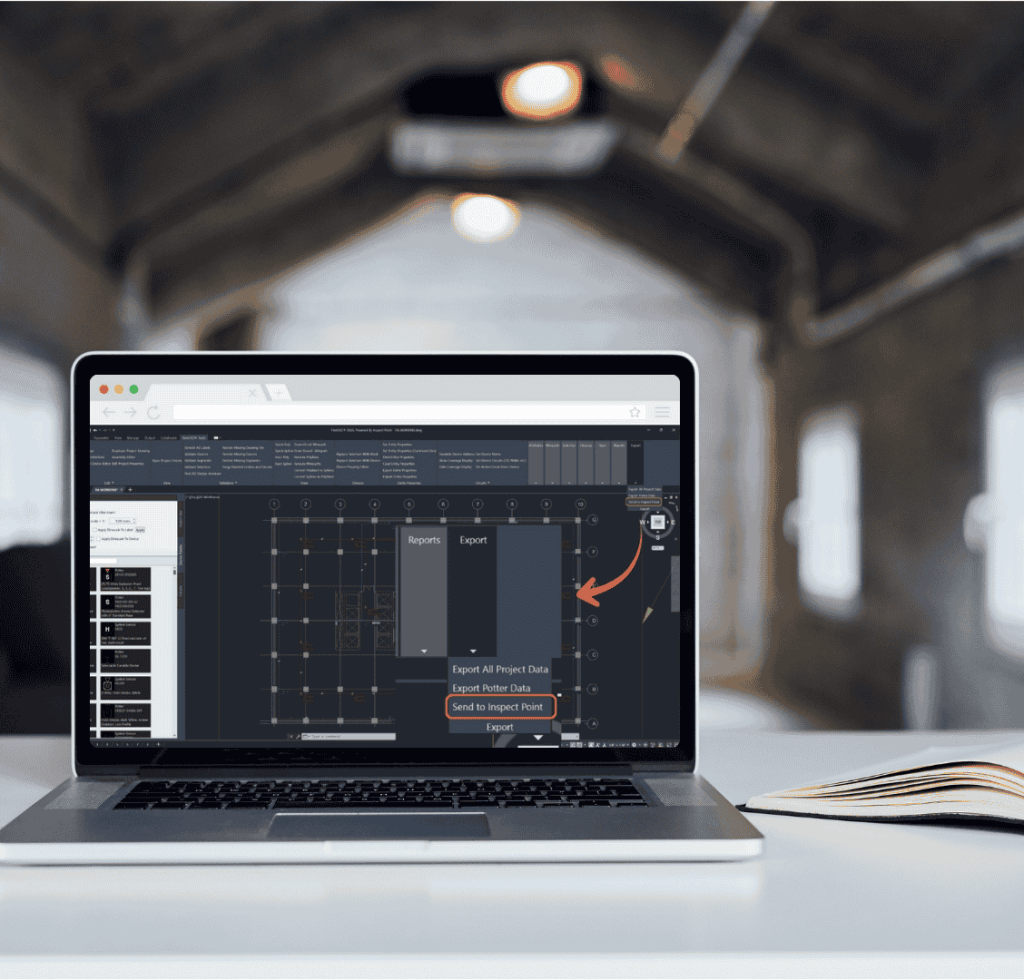If you design fire alarm systems, you know the feeling: You’ve spent hours perfecting a layout, labeling devices, tightening your documentation—and as soon as the design leaves your hands, the friction begins. Spreadsheets get passed around. Someone rebuilds your device list in a different format. A field team misses an update. An AHJ asks for clarification on something that already exists in the CAD file.
It’s not that anyone is doing anything wrong. It’s that design and inspection often live in two separate worlds. And the “bridge” between them is usually a mix of exports, reformatting, copy-paste, and crossed fingers.
With the new FireCAD × Inspect Point integration, that disconnect finally closes.
Why the Handoff Breaks Down
Most of the pain happens in three predictable ways:
1. Data Drift
Design changes fast—and so do spreadsheets. A model number gets updated, a device moves loops, or an address changes. But unless someone manually rebuilds the device list, the field team ends up working from outdated information.
2. Manual Bottlenecks
Exporting the BOM, cleaning fields, renaming columns, re-mapping data into an inspection tool… then repeating it all again when design changes. Every handoff introduces time and room for error.
3. Fragmented Ownership
When the “source of truth” shifts between files, inboxes, and platforms, nobody is fully confident they’re working from the correct version.
For designers, this creates unnecessary back-and-forth and erodes the clarity you built into your plans. For inspectors and technicians, it creates confusion in the field. And for project managers, it creates avoidable delays.
What Changes with the Inspect Point Integration
We worked closely with the Inspect Point team to ensure that the design intelligence built in FireCAD can flow directly into the inspection workflow—without re-entry, reformatting, or rebuilding.
Here’s what that looks like:
1. One-Click Design-to-Inspection Sync
Your FireCAD device data—type, make/model, address, zone, and location—pushes directly into Inspect Point with a single action. That device list becomes the inspection list.
2. No More Spreadsheets
The integration eliminates manual exports and CSV juggling. Data moves structurally and securely from design to inspection.
3. A Single Source of Truth
Designers, PMs, inspectors, and technicians all work from the same verified dataset. When design updates, inspection updates. No guesswork.
What This Means for FireCAD Users
For Designers
Your intent carries through the entire lifecycle of the project. Fewer clarification calls. Fewer mismatches. Less rework.
For Field Teams
Inspectors and technicians receive accurate, complete device lists that match your plans exactly.
For Project Managers & Ops
Better throughput, fewer delays, and a clearer path from submittal to closeout.
A Quick Look at the Workflow
- Design: Build your system in FireCAD with rich device metadata.
- Sync: Send that device list into Inspect Point instantly.
- Plan: PMs schedule inspections directly from the synced list.
- Field: Technicians complete inspections against the exact design data.
- Closeout: Inspection results flow into reports and dashboards, and future syncs keep everything aligned.
The handoff becomes a handshake.
See the Integration in Action
If you want to dive deeper into how the FireCAD × Inspect Point integration works — and why it’s changing the design-to-inspection workflow — learn more about our integration here.
- FireCAD x Inspect Point Integration: Closing the Gap Between Design and Inspection - November 20, 2025
- Design with Confidence: How FireCAD Simplifies NFPA Compliance for Fire Alarm Engineers - October 6, 2025
- Smarter Fire Alarm Design: How Engineers Can Streamline Workflows with FireCAD - October 6, 2025



